FieldStrength MRI magazine
User experiences - December 2019
Accelerated MRI examinations helped to increase productivity, allowing up to 20 additional patients to be scanned each week.
In September 2018, Cobalt was the first imaging facility in the UK to install Compressed SENSE in a clinical setting. Over a three month trial period, the team has been able to scan an additional 17-20 patients per week compared to the same period in the previous year, using the same Ingenia 3.0T scanner. The time gain with Compressed SENSE was also used to increase spatial resolution in anatomies where this matters, for instance in breast imaging.
“Cobalt saw its diagnostic imaging services reduce their MRI examination times by up to 30–50%, accommodating up to 20 additional patients per week as a result.”
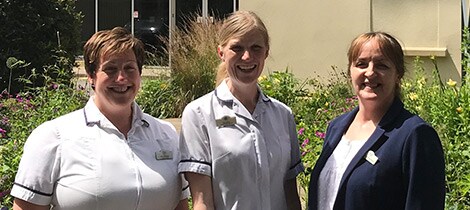
From left to right:
Ruth Pearson
Training Facilitator, MRI radiographer
Zoe Wray
MRI Senior Radiographer
Karen Hackling-Searle
Head of MRI
Growing pressure on imaging services
Over a four-year period, the number of Magnetic Resonance Imaging (MRI) scans being performed annually in England has grown by 8.9% (from 2.35 million in2012/13 to 3.36 million in 2016/17)[1]. This is compounding pressures on radiologists. Figures suggest their workload has increased by 30% during a similar period (2012–2017) [2].
There is also an ongoing, nationally recognized shortage of diagnostic radiographers, particularly those specializing in MRI and CT [3,4].
This increased workload is having detrimental impacts on the radiology workforce, with radiologists and radiographers showing signs of stress and burnout, in part due to longer working hours – a factor in taking an early retirement or a change in career [5].
The use of MRI is predicted to increase further, owing to an increase in chronic conditions and continuous pressures on healthcare systems [6]. These findings underline a need for increased efficiencies in imaging services in the UK.
Cobalt: innovation in imaging
Cobalt is a charity that invests in equipment, research and education to enable patient access to the best technology and medical imaging services. Cobalt and Philips have enjoyed a strong collaboration since 1993 when the first 0.5T MRI scanner in a mobile unit was provided to support patients in Gloucestershire, Herefordshire and Worcestershire. Since then Cobalt and Philips have collaborated on a number of memorable firsts, including the UK’s first 1.5T MRI in a mobile unit, first 1.5T Ingenia mobile, and first 3.0T Achieva TX and Ingenia MRI mobiles. The team at Cobalt is primarily focused on medical diagnostic imaging and believes that all patients should have access to the very best equipment while helping doctors to make a clear diagnosis, and an appropriately personalized treatment plan. The Imaging Centre in Cheltenham remains at the forefront of diagnostic imaging technology.
Over 75,000 patients are seen each year, both at the Imaging Centre in Cheltenham, at the Institute of Translational Medicine (ITM) Imaging Centre in Birmingham and with the mobile MRI and CT scanners that travel nationally. To meet the increasing demand for MRI capacity within the clinic, Cobalt introduced the Philips Compressed SENSE technology on their Ingenia 3.0T during September 2018. This made Cobalt the first imaging facility in the UK to use Compressed SENSE in a clinical setting, over a three month period.
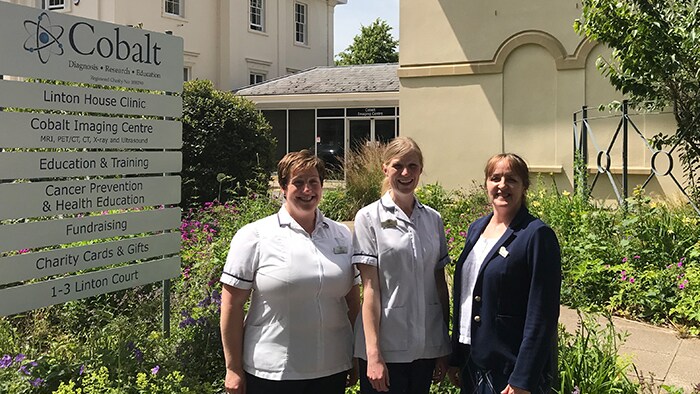
In fact, the transition was indeed seamless, as the radiologists did not notice the changes made, and continued to report as if nothing has changed.
Adapting to the acceleration software and steps taken to increase impact
News regarding the Compressed SENSE pilot generated excitement amongst the team. Karen Hackling-Searle, Head of MRI, says: “We discussed Compressed SENSE with the radiographers and highlighted this was something new with the potential for measurable benefits for our patients. A core group of radiographers really embraced the trial, in the hope that we’d see some tangible benefits.”
Rather than changing all the scanning protocols immediately, several routine body areas were chosen for dedicated Compressed SENSE scanning sessions. Where possible, body areas were blockbooked to reduce set-up time and increase the throughput.
Dedicated sessions also gave the team time to review the patient pathway from reception arrival, through preparation to scanning and patient release. This was to arrive at efficient workflows to turn patients around in shorter appointment slots, whilst continuing to maintain the same level of care and support.
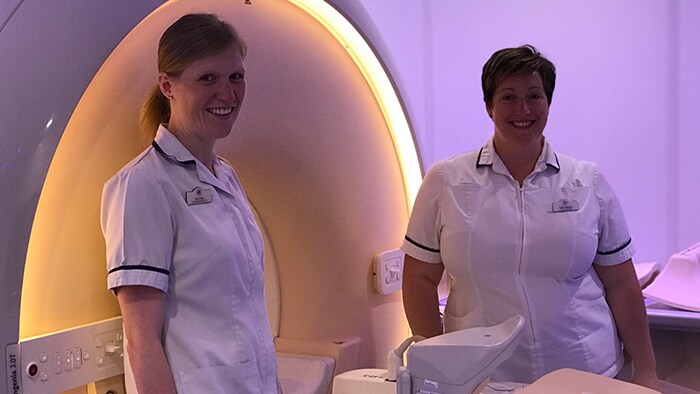
Patients were asked to arrive earlier at the clinic and measures were taken to accommodate additional car parking requirements, owing to the increase in patients arriving during the Compressed SENSE sessions. The team recognized a need for additional staff to guide the patients through the pathway and arranged for a dedicated Imaging Assistant to the Ingenia 3.0T scanner. A core team was established to set up and optimize scanning protocols. This gave them ownership of the task, and authority to develop the protocol as was necessary, whilst maintaining high image quality.
When developing protocols, the team had to take care that there was no compromise on image quality and that the transition to new protocols was seamless. In fact, the transition was indeed seamless, as the radiologists did not notice the changes made, and continued to report as if nothing has changed.
“Cobalt strive for innovation and improving the patient pathway. With that in mind, we always have our eye open for anything new to achieve this. With Compressed SENSE there will be a lot of discussions across the whole MR world about this technological advance in MRI acceleration technique,” says Karen Hackling-Searle.
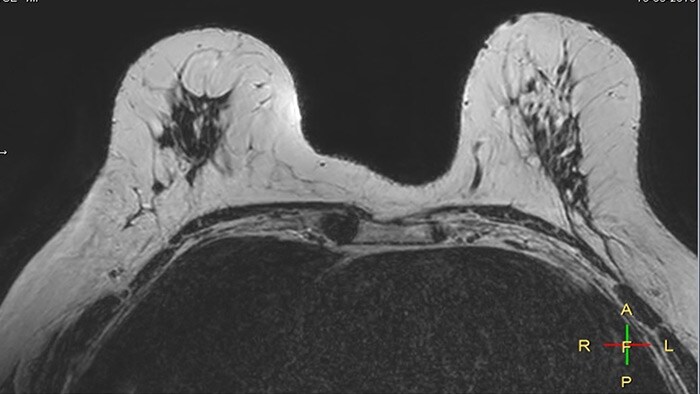
Compressed SENSE, scan time 3:54 min Voxels acq 0.8 x 0.72 x 1.8 mm Voxels recon 0.63 x 0.63 x 0.9 mm
C-SENSE factor 12
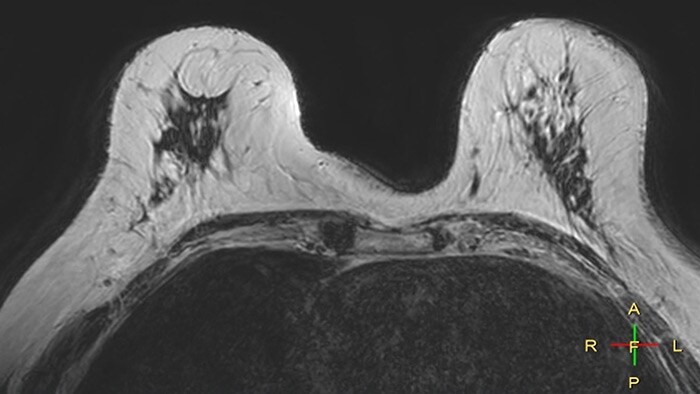
SENSE, scan time 6:32 min Voxels acq 0.8 x 0.8 x 1.8 mm Voxels recon 0.63 x 0.63 x 0.9 mm
SENSE factor 3
"Now with the Compressed SENSE technology, we can get more detail and scan faster”
Increasing productivity and diagnostic confidence
The team were able to scan an additional 17–20 patients per week, compared with the same period in the previous year. The increased throughput meant that the staff had to be more prepared in terms of moving the patients through the system efficiently.
“I would definitely say that throughput has been helpful to our breast list. Prior to Compressed SENSE we were scanning up to seven patients, we’re now able to scan up to nine patients within the same time period,” says Zoe Wray.
The time gain with Compressed SENSE was also used to increase resolution in order to help radiologists identify the tumor characteristics more confidently which may be used for a more personalized treatment. For example, in breast imaging, resolution is crucial for visualization of very small lesions. Compressed SENSE allows to scan thinner slices, allowing a 3D isotropic sequence which can provide increased diagnostic confidence for the radiologists.
“The 3D-THRIVE sequence has proven to be important in providing detailed post-processing data to inform on diagnosis and how we care for the patient,” says Ruth Pearson. “Normally, if you want more detail on an MRI scan, the scan takes longer. Previously we’ve had to balance between getting the detail required and how long the patient can lie still. Now with the Compressed SENSE technology, we can get more detail and scan faster.”
| | | | |
| | | | |
| | | | |
| | | | |
| | | | |
| | | | |
| | | | |
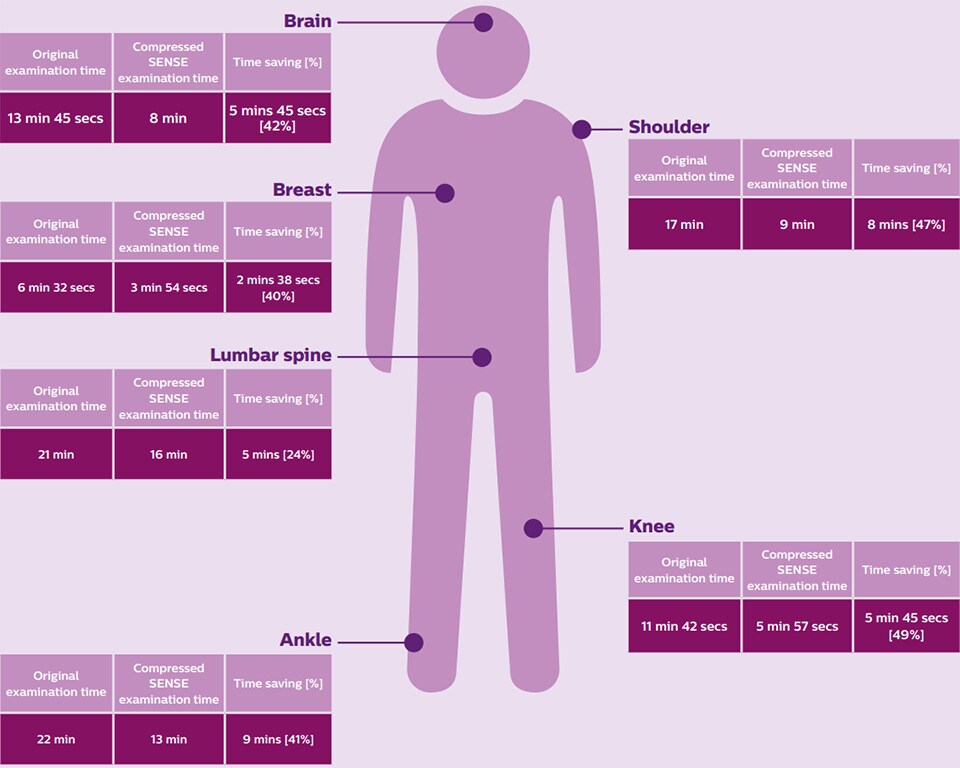
Enhanced patient experience
Zoe Wray, also adds: “It’s better for the patient in that they’re not having to stay still as long and they’re not having to stay in the scanner longer than required either, which can help improve the experience.” Other groups who are likely to benefit include those suffering with pain, and children where keeping still for an examination is challenging.
Compressed SENSE in combination with In-bore experience and the Ambient lighting is a combined approach that can help relax patients, supporting the high levels of compliance and a successful scanning to support confident diagnosis. The radiographers feel they did not need to spend so much time encouraging anxious patients on and into the scanner during set up, which allows a quicker examination, often with less movement issues, which helped in keeping the day list schedule on-track.
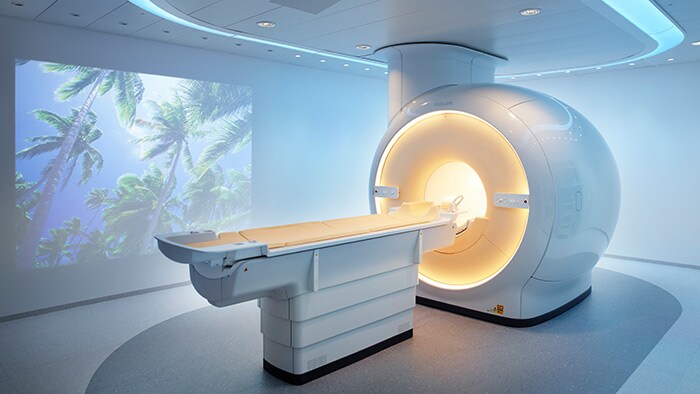
The Ingenia 3.0T with Ambient Experience lighting in situ at the Cobalt centre.
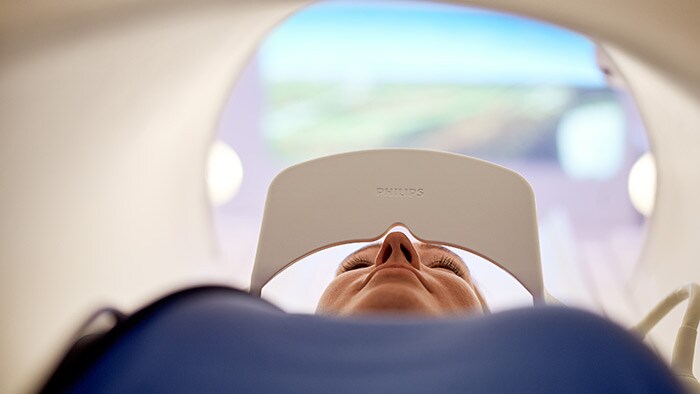
The Ingenia 3.0T provides an immersive in-bore visual experience.
References
Results from case studies are not predictive of results in other cases. Results in other cases may vary.
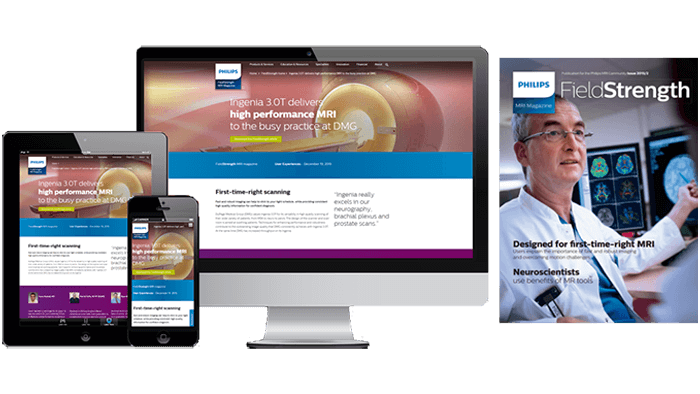
Subscribe to FieldStrength
Our periodic FieldStrength MRI newsletter provides you articles on latest trends and insights, MRI best practices, clinical cases, application tips and more. Subscribe now to receive our free FieldStrength MRI newsletter via e-mail.
Stay in touch with Philips MRI


Related information

